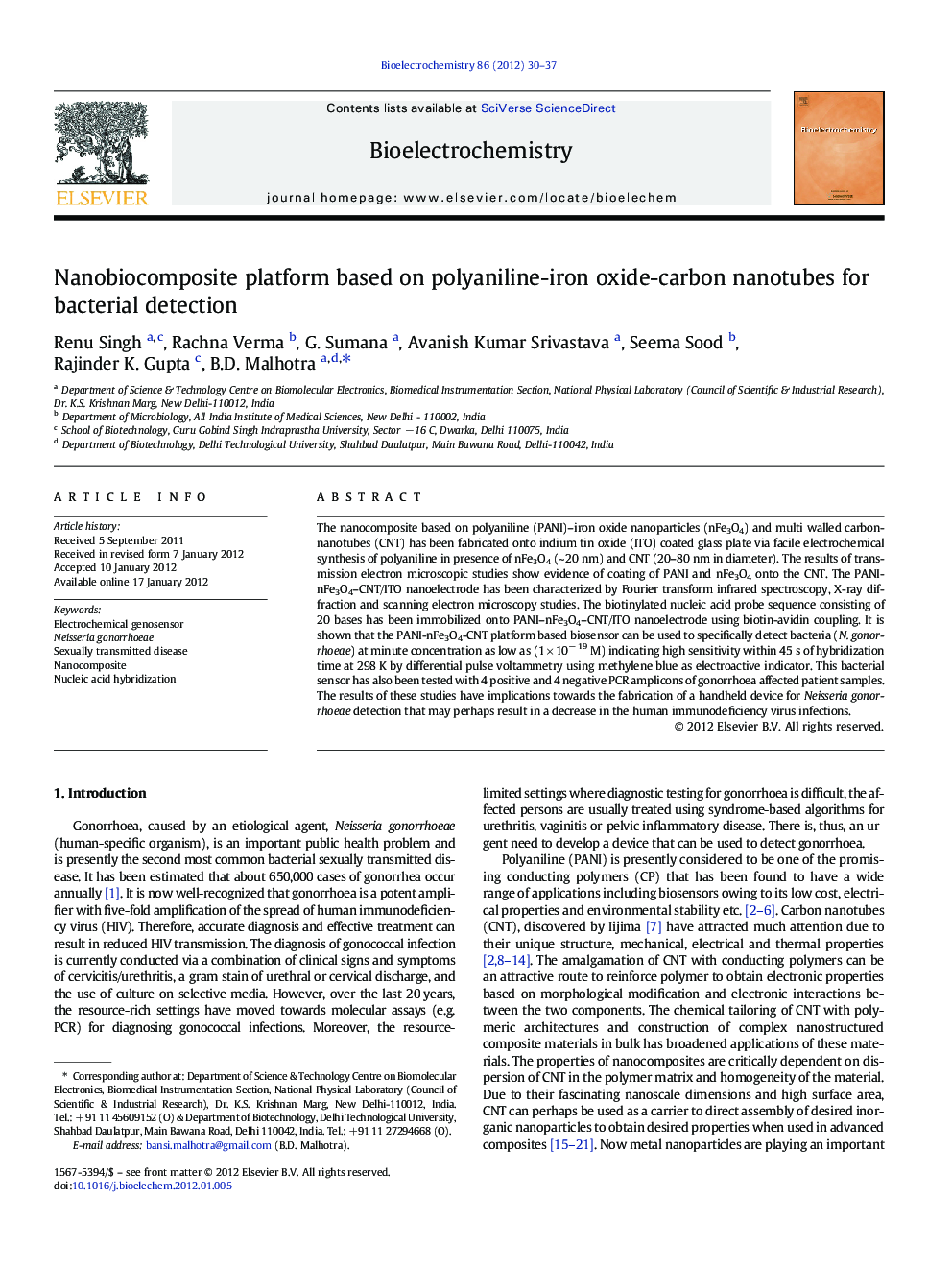| کد مقاله | کد نشریه | سال انتشار | مقاله انگلیسی | نسخه تمام متن |
|---|---|---|---|---|
| 1271775 | 1496926 | 2012 | 8 صفحه PDF | دانلود رایگان |

The nanocomposite based on polyaniline (PANI)–iron oxide nanoparticles (nFe3O4) and multi walled carbon-nanotubes (CNT) has been fabricated onto indium tin oxide (ITO) coated glass plate via facile electrochemical synthesis of polyaniline in presence of nFe3O4 (~ 20 nm) and CNT (20–80 nm in diameter). The results of transmission electron microscopic studies show evidence of coating of PANI and nFe3O4 onto the CNT. The PANI-nFe3O4–CNT/ITO nanoelectrode has been characterized by Fourier transform infrared spectroscopy, X-ray diffraction and scanning electron microscopy studies. The biotinylated nucleic acid probe sequence consisting of 20 bases has been immobilized onto PANI–nFe3O4–CNT/ITO nanoelectrode using biotin-avidin coupling. It is shown that the PANI-nFe3O4-CNT platform based biosensor can be used to specifically detect bacteria (N. gonorrhoeae) at minute concentration as low as (1 × 10− 19 M) indicating high sensitivity within 45 s of hybridization time at 298 K by differential pulse voltammetry using methylene blue as electroactive indicator. This bacterial sensor has also been tested with 4 positive and 4 negative PCR amplicons of gonorrhoea affected patient samples. The results of these studies have implications towards the fabrication of a handheld device for Neisseria gonorrhoeae detection that may perhaps result in a decrease in the human immunodeficiency virus infections.
Figure optionsDownload as PowerPoint slideHighlights
► PANI–nFe3O4-CNT nanocomposite prepared onto ITO coated glass plate by facile electrochemical synthesis.
► TEM studies show evidence of PANI-nFe3O4-CNT nanocomposite formation with coating of PANI and nFe3O4 onto the CNT.
► 20 mer bases long biotinylated nucleic acid as a model probe for immobilization.
► Very sensitive and specific to detect pathogenic bacteria such as N. gonorrhoeae at low concentration (1 × 10− 19M) displaying high sensitivity.
Journal: Bioelectrochemistry - Volume 86, August 2012, Pages 30–37